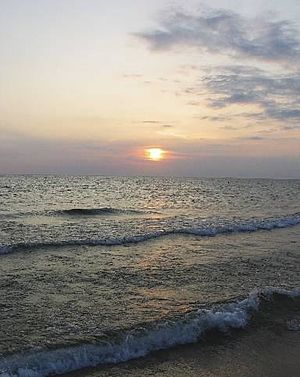 Image via Wikipedia
Image via Wikipediahttp://www.downloadsquad.com/2010/09/06/notscripts-for-chrome-disables-javascript-iframes-and-plug-ins
Google's buckyballs doodle KILLED THE PLANET
http://www.downloadsquad.com/2010/09/06/googles-buckyballs-doodle-killed-the-planet
In a recent article I wrote for School Library Journal, “Everyday Advocacy“, there are many suggestions for ways to use online tools for advocacy purposes.
http://futura.edublogs.org/2010/08/04/as-a-new-year-begins
Non-Invasive Therapy Significantly Improves Depression
a unique new therapy that applies electrical stimulation to a major nerve emanating from the brain is showing promise.
Backstabbing Bacteria: A New Treatment for Infection?
http://www.sciencedaily.com/releases/2010/09/100905231233.htm
Lake Michigan Ecosystem May Crash: 'Doughnut' of Phytoplankton Disappearing
http://www.sciencedaily.com/releases/2010/09/100903210420.htm
No one knew about the doughnut in southern Lake Michigan, much less the mollusk, until Michigan Technological University biologist W. Charles Kerfoot and his research team first saw it in 1998. That's because scientists have always been wary of launching their research vessels on any of the shipwreck-studded Great Lakes in winter. But NASA's new Sea-viewing Wide Field-of-view Sensor (SeaWiFS) Project was giving scientists a safer way to look at the lakes in bad weather. SeaWiFS satellite data showed Kerfoot's team a roughly circular river of phytoplankton -- algae and other tiny plants -- that was drifting counterclockwise around the southern end of Lake Michigan, creating a doughnut.
The group determined that the doughnut was formed when big winter storms kicked up sediments along the southeastern shore of the lake. There, Michigan's biggest rivers drain a watershed rich in phosphorus and other nutrients from cities and farms. Those nutrients settle in the lake's sediments until storms stir them up. Then, suspended in the water column, they begin circulating in a slow-moving gyre that flows from Grand Haven in the north to Chicago in the south. That gyre creates a Thanksgiving feast for phytoplankton. "We saw that with each storm, you get a ring, and it can persist for weeks or even months," says Kerfoot.
"We were floating in the clouds, saying 'Hey, we discovered a new phenomenon,'" he remembers. Samples of lake water taken from research vessels verified the satellite data. Plus, they found that zooplankton, the tiny animals that feed on phytoplankton, were much more abundant in the doughnut. For them, the seasonal bloom was an all-you-can-eat salad bar, an important part of their strategy to survive winter. Those zooplankton were eaten in turn by small fish, which were eaten by large fish, which fueled an angling paradise productive enough to merit the nickname Lake Fishigan.
Then, almost as soon as it was discovered, the doughnut started to disappear. "Since 2001, the chlorophyll has been nibbled away on the edges, right where the quaggas are," says Kerfoot.
U.N. climate panel urged to reform, stick to science
http://www.newsdaily.com/stories/tre67t2x1-us-climate-un
The U.N. climate panel should make predictions only when it has solid evidence and should avoid policy advocacy, scientists said in a report on Monday that called for thorough reform of the body.
The U.N. Intergovernmental Panel on Climate Change (IPCC) was widely criticized after admitting its 2007 global warming report wrongly said Himalayan glaciers would vanish by 2035 and that it overstated how much of the Netherlands is below sea level.
Such firm forecasts should be made "only when there is sufficient evidence," said a review group supported by the academies of science from the United States, Netherlands, Britain and around 100 other countries.
Critics of the idea of mandatory limits on so-called greenhouse gas emissions have said the IPCC errors show the science behind global warming is questionable.
New Self-Assembling Photovoltaic Technology Repairs Itself
http://www.sciencedaily.com/releases/2010/09/100905161908.htm
One of the problems with harvesting sunlight is that the sun's rays can be highly destructive to many materials. Sunlight leads to a gradual degradation of many systems developed to harness it. But plants have adopted an interesting strategy to address this issue: They constantly break down their light-capturing molecules and reassemble them from scratch, so the basic structures that capture the sun's energy are, in effect, always brand new.
That process has now been imitated by Michael Strano, the Charles and Hilda Roddey Associate Professor of Chemical Engineering, and his team of graduate students and researchers. They have created a novel set of self-assembling molecules that can turn sunlight into electricity; the molecules can be repeatedly broken down and then reassembled quickly, just by adding or removing an additional solution. Their paper on the work was published on Sept. 5 in Nature Chemistry.
Obesity incidence underestimated and threshold overestimated
http://balneus.wordpress.com/2010/09/01/obesity-incidence-underestimated-and-threshold-overestimated
Recalling History: Making the Case for U.S. Government Broadcasting
http://mountainrunner.us/2010/08/selfportrait.html
Understanding the context of public diplomacy, the institutions, and methods is important. For too many, public diplomacy began in the 1980s when the beginning of recent memory. At a 2009 conference organized by Doug Wilson, now the Assistant Secretary of Defense for Public Affairs, I sat on a “scene setting” panel with Harriet Fulbright, widow of the late Senator Fulbright, Len Baldyga, former Director of the Office of European Affairs of USIA, Barry Fulton, former Associate Director of USIA, and moderated by Bob Coonrod, former deputy director of VOA and former president and CEO for the Corporation of Public Broadcasting. (I still don’t know why I was on this panel of luminaries.) Each person told a terrific example of public diplomacy. My job was to wrap it up, so I did. I realized there was a common theme: at one time we prioritized the resources (people, money, and “things”) to identify and engage the right audiences.
This idea of appreciating the imperative and the necessary activities is at the root of what was once simply public affairs, before politics in DC necessitated a distinction between audiences and bureaucracies that we are still struggling to overcome (though many still have yet to grasp the damage caused).
Jobless Uptick Masks Some Positive News
economists said a modest rise in private payrolls last month is a sign that the economy is on the mend, though just barely.
( 'Damage Caused' in previous article...might have much to do with effects of believing government run by advertisers for the benefit of con artists and the morale of the electorate )









No comments:
Post a Comment